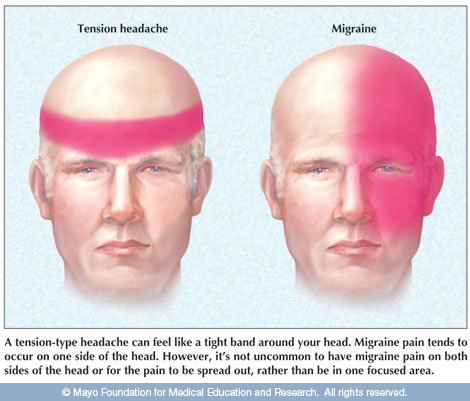Prevalence of Neck Pain in Migraine and Tension-type Headache: A Population Study
SOURCE: Cephalalgia. 2015 (Mar); 35 (3): 211–219
Sait Ashina, Lars Bendtsen, Ann C Lyngberg, Richard B Lipton, Nazrin Hajiyeva and Rigmor Jensen
Department of Pain Medicine and Palliative Care,
Mount Sinai Beth Israel,
Icahn School of Medicine at Mount Sinai, NY, USA
BACKGROUND: We assessed the prevalence of neck pain in the population in relation to headache.
METHODS: In a cross-sectional study, a total of 797 individuals completed a headache interview and provided self-reported data on neck pain. We identified migraine, TTH or both migraine and TTH (M+TTH) groups. Pericranial tenderness was recorded in 496 individuals. A total tenderness score (TTS) was calculated as the sum of local scores with a maximum score of 48.
RESULTS: The one-year prevalence of neck pain was 68.4% and higher in those with vs. without primary headache (85.7% vs. 56.7%; adjusted OR 3.0, 95% CI 2.0–4.4, p<0.001). Adjusting for age, gender, education and poor self-rated health, in comparison with those without headaches, the prevalence of neck pain (56.7%) was significantly higher in those with M+TTH (89.3%), pure TTH (88.4%) and pure migraine (76.2%) (p<0.05 for all three group comparisons). Individuals with neck pain had higher TTS than individuals without neck pain (15.1±10.5 vs. 8.4±8.0, p<0.001).
CONCLUSIONS: Neck pain is highly prevalent in the general population and even more prevalent in individuals with primary headaches. Prevalence is highest in coexistent M+TTH, followed by pure TTH and migraine. Myofascial tenderness is significantly increased in individuals with neck pain.
KEYWORDS: Neck pain, migraine, tension-type headache, prevalence, population, tenderness
From the FULL TEXT Article:
Introduction
Neck pain and primary headaches are highly prevalent in the population. [1, 2] Estimated global one-year period prevalence is about 10% for migraine and about 38% for tension-type headache (TTH). [3, 4] One-year prevalence of neck pain ranges from 4.8% to 79.5% in population-based studies. [1] Variation in epidemiological studies of neck pain is attributable, at least in part, to differences in sample selection, ascertainment of symptoms and case definitions. [1] Neck pain can arise from many local structures, including muscles, ligaments, facet joints and visceral structures of the neck, through direct compression of upper cervical roots or it can be referred. [5] Thus, the differential diagnosis for neck pain includes various conditions such as spinal disease, whiplash-associated disorder, fibromyalgia, myofascial pain, rheumatic disease, direct trauma and neoplasms.
Neck pain is common in people with primary headaches, both in population-based studies and in the clinic. [6–10] Neck pain may occur as a premonitory manifestation or during the headache phase. [11] A better understanding of neck pain in primary headache is important. First, it will help facilitate more accurate diagnosis. Second, neck pain may influence the treatment response and result in increased disability in headache suffers. [12] Finally, neck pain may play a role in the pathophysiology of both migraine and TTH. [13, 14] It may arise because of convergent input from the first division of the trigeminal nerve and the upper cervical roots to the trigeminal cervical complex. [13]
The aim of our study was to assess the prevalence of self-reported neck pain in individuals with common primary headaches including migraine, TTH and coexistent migraine and TTH in a general population sample using the clear diagnostic criteria of the International Classification of Headache Disorders (ICHD).
Read the rest of this Full Text article now!
[/fusion_text][/fusion_builder_column][/fusion_builder_row][/fusion_builder_container]






Leave A Comment